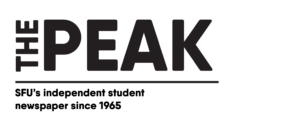Screening at Vancouver International Film Festival covers various women and their struggles to be taken seriously.
By Monica Miller
Photos by Vancouver International Film Festival
Women in the media sphere are commonplace nowadays, but you still hear about the struggles these smart, intelligent, and politically savvy women face to break into the industry. That’s why No Job for a Woman: The Women Who Fought to Report WWII, screening at the Vancouver International Film Festival, is important. Change only occurs when people (men and women) stand up for what they believe in.
During the Second World War, women were encouraged to support the war effort by taking factory and industry positions, jobs as nurses, and even roles traditionally filled by men. One of these roles was reporting, particularly war correspondence. Some larger publishers had female staff in secretarial positions, and sometimes in charge of the women’s pages, covering society news, and “the four Fs” of food, fashion, furniture, and family. There were scant few women allowed accreditation to report in the field.
No Job for a Woman introduces many of the voices of the era, including well-known photographer Margaret Bourke-White. But it also profiles the lives of three lesser-known female reporters — Ruth Cowan, Dickey Chapelle, and Martha Gellhorn. These women went against the current rules, opinions and regulations to do what they believed in. Director Michele Midori Fillion credits this to their strong work ethic, a high level of professionalism and dedication, yet each woman tackled the struggle and barriers differently.
Ruth Cowan got her start in reporting by using her middle name (Baldwin) but when her true gender was discovered, she was fired on the spot. At her next position, she was relegated to the women’s pages. Cowan kept fighting to report serious news stories, and eventually was the first woman to receive U.S. accreditation to cover the Second World War. However, she was again assigned the “women’s angle” — the changing roles, the nurses, and the newly formed Women’s Army Auxilary Corps, which she took whole heartedly. Cowan spent her career continually covering the women who were making a difference in the male-centric world.
But some female reporters didn’t want to be relegated to just covering female subjects. Dickey Chapelle was an aviation enthusiast and photographer. She was assigned to photograph the nurses and the use of blood transfusions on a hospital ship. She wrangled her way into going ashore, and spent the rest of her career fighting for the right to go where the male reporters were allowed.
Martha Gellhorn’s motivation was one that we often see reflected in stories today — the human angle. Since the rise of fascism in Spain, Gellhorn (also Ernest Hemingway’s wife) focused on covering what war did to the people who lived through it, the families, the children, the people, and citizens of all countries involved.
No Job for a Woman mixed archival footage, photographs, and stories with contemporary scholars, and brought the whole story to life in reenactments with actresses portraying Cowan, Chapelle, and Gellhorn.

































